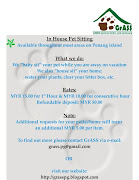IMAGINE driving a car from Stockholm in Sweden to Seville, France (a total distance of 3,582km) on a single litre of fuel. That is the equivalent of making a return trip from Bukit Kayu Hitam in Perlis to Johor Baru, five times. Impossible, you say?
Well, you're absolutely wrong.
A group of students from Lycee La Joliverie in Nantes, France, proved that they can indeed travel that far on a single litre of petrol. They even went a further 189km on their second try.
They achieved this feat at the recent Shell Eco-Marathon 2009, held at EuroSpeedway in Lausitz, Germany. The competition, in its 25th year, challenges student teams to design and build energy efficient vehicles that travel the farthest distance using the least amount of fuel. It drew over 200 participating teams from 25 countries across the world.
 |
Entry from Lycee La Joliverie which won the overall Prototype category. |
"We're absolutely happy with our performance in this year's Eco-Challenge," said Vovard Regis, 21 of team Microjoules from Lycee La Joliverie.
Students from both secondary and tertiary institutions globally were invited to submit vehicles using various conventional and unconventional fuels (such as diesel, petrol, fuel cells/hydrogen, bio-fuel, solar and Gas-to-Liquid) under two categories – Prototypes or UrbanConcept.
Prototypes feature more futuristic design while vehicles in the UrbanConcept category is built for conventional road usage.
Before going out on the track, each vehicle must successfully complete a strict test to ensure that it meets safety standards, and complies with the event's rules and regulations.
Vovard's team was crowned as the overall winners in the Prototype category, and they also emerged victorious in the Internal Combustion Engine sub-category.
"We clocked 3,582km on the second day and totally broke the record again when we did 3,771km on the last day. We're absolutely happy with the result," said Vovard.
The previous record of 3,410km/l was also set by a group of Lycee La Joliverie students back in 2004, which had been unbeatable until now.
The Microjoules' entry car is the fifth version of the original car that debuted in the Shell Eco-Marathon in 1987. They even brought the first car to be put up for display at their exhibition booth at the EuroSpeedway circuit.
 |
The Norwegian Technology National University team's entry which won the UrbanConcept overall category. |
"The winning car runs on petrol but its engine applies the latest automotive techniques that helps the car to consume less fuel," said Vovard, whose team built the engine from scratch.
The team, made up of 50 members, were all present at the racetrack to lend either their expertise or support. They have been working on the car as part of their school's project.
"We were always working on this car, it's a perpetual cycle, which is why I can't tell you how long it took to create this particular car. If I must put a year to it, I'd say that we've been working on it since 1987," he added.
The champions in the UrbanConcept category, team NTNU from Norwegian Technology National University in Norway on the other hand, had been working on their hydrogen-fuelled car for only about a year.
"We started working on this car in August last year on a budget of €100,000 (RM480,000)," said NTNU team leader Stian Christensen, 28.
He added that the car is actually ready for regular use on the road, but since the production cost is too high, that idea might not be feasible.
 |
Joerg Weigl (far right, standing) and Joseph Koh (in car) worked hard to get their car to run the full course. |
NTNU had done some test prior to Shell Eco-Marathon and the results were pretty satisfactory. "We're surprised at the results we got at this year's competition and are really happy about it," said Stian.
The NTNU car travelled an impressive 1,246km on a single litre fuel but it was not enough to beat the 3,836km record set by the Swiss team ETH Zurich in 2005.
That distance is the equivalent of driving from Paris to Moscow (which is three-and-a-half-hour flight!).
"We didn't beat the record but we're very happy nonetheless. We had some problems with the car initially, but managed to fix it just in time for the final run," Stian added.
Each team that competed in the UrbanConcept category have to compete 22.081km in 53 minutes, while the Prototype participants must complete 25.485km in 51 minutes.
Malaysia was also represented at this top-notch competition. Two University Teknologi Malaysia (UTM) students had their first experience of competing against their peers in designing eco-friendly vehicles. Getting to Germany has been challenging as they had to work with limited resources.
"We didn't have much money to work on this car, which costs about €20,000 (RM96,000), but we made do with what we had," said 28-year-old Joseph Koh, a Masters in Engineering student.
They had friends who chipped in wherever they can. One of Joseph's buddies, who owns a bicycle shop, offered to suit their vehicle with tyres for free.
It's also because of financial constraint that the rest of the six-member team couldn't attend the competition in Germany.
 |
The Microjoules from Lycee La Joliverie posing with their car. |
"We didn't have sponsors to help us fund the flight tickets, but we must say that Malaysia Airlines helped by waiving the luggage fee for our dismantled car," said Joerg Weigl, the other team member.
While most participants spent months – even years – working on their cars, the UTM team took only about four weeks to complete its design.
"The UTM management let us borrow its solar-powered bicycle, which we then modified into a three-wheeled car to comply to the competition's rule," said Joerg.
During the competition, the team struggled to get its solar-powered car, which entered under the Prototype category, to run the course.
The team managed to get the car to run on the last attempt but unfortunately, it exceeded the time limit by four seconds, and the team was disqualified from the competition.
"There was a slight technical problem and we couldn't complete the track in the earlier rounds, and the one time we finished, we exceeded the time limit," lamented Joerg.
Nevertheless, the boys were happy with their performance despite losing out in the competition.
"We're the first team to represent Malaysia and we're glad that we even made it this far. It's been a great experience and we're looking forward to the next race," said Joseph.
For more pictures of the event, go to: http://tinyurl.com/okocvp
This article was taken from: The Star Online: Rage: Stories: Issues 19 May 2009











































No comments:
Post a Comment